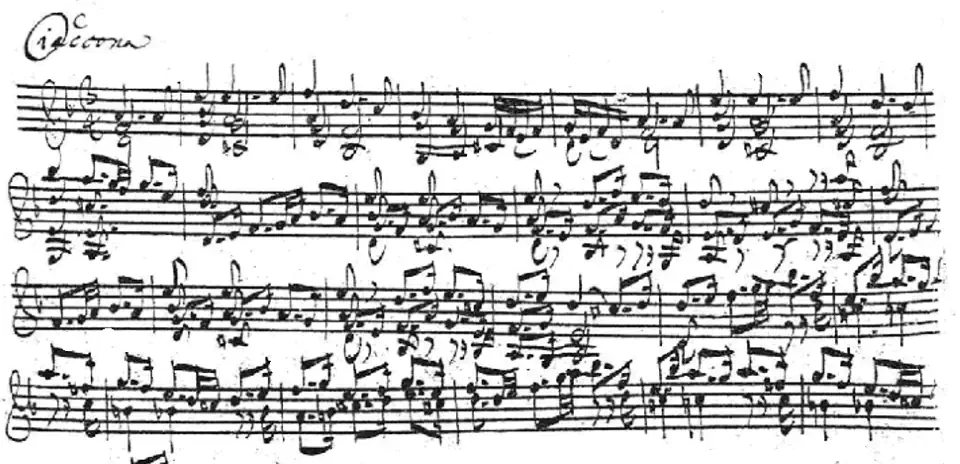Itzhak Perlman plays Johann Sebastian Bach’s Partita for Violin No. 2, BWV 1004. The piece, which includes the famous “Chaconne” was written between 1717 and 1720. This performance is a live recording from Saint John’s Smith Square, London (1978).
Johann Sebastian Bach’s Partita for Violin No. 2, BWV 1004
Partita (also partie, partia, parthia, or parthie) was originally the name for a single-instrumental piece of music (16th and 17th centuries), but Johann Kuhnau (Thomaskantor till 1722, followed by Bach) and later German composers (notably Johann Sebastian Bach) used it for collections of musical pieces, as a synonym for suite.
Bach wrote the Partita in D minor for solo violin, BWV 1004 between 1717 and 1720. It is a part of his compositional cycle called Sonatas and Partitas for Solo Violin.
Movements
With starting times in the video:
- 01:04 Italian: Allemanda, French: Allemande. One of the most popular instrumental dance forms in Baroque music, and a standard element of a suite. Originally, the allemande formed the first movement of the suite, before the courante, but, later, it was often preceded by an introductory movement, such as a prelude.
- 04:36 Italian: Corrente, French: Courante. It is one of the names given to a family of triple meter dances from the late Renaissance and the Baroque era.
- 06:37 Italian: Sarabanda, French: Sarabande. Derived from the Spanish zarabanda, it is a dance in triple meter.
- 11:02 Italian: Giga, French: Gigue. It is a lively baroque dance originating from the British jig.
- 13:51 Italian: Ciaccona, French: Chaconne. It was a type of musical composition popular in the baroque era when it was much used as a vehicle for a variation on a repeated short harmonic progression, often involving a fairly short repetitive bass-line (ground bass) which offered a compositional outline for variation, decoration, figuration, and melodic invention. In this, it closely resembles the passacaglia. The ground bass, if there is one, may typically descend stepwise from the tonic to the dominant pitch of the scale; the harmonies given to the upper parts may emphasize the circle of fifths or a derivative pattern thereof.
- Johannes Brahms, in a letter to the German pianist, composer, and piano teacher Clara Schumann (1819-1896) in June 1877, said about the ciaccona: “The Chaconne is for me one of the most wonderful, incomprehensible pieces of music. On one stave, for a small instrument, the man writes a whole world of the deepest thoughts and most powerful feelings. If I imagined that I could have created, even conceived the piece, I am quite certain that the excess of excitement and earth-shattering experience would have driven me out of my mind.”
- Widely considered one of the greatest violinists of the 20th century, American-born violinist and conductor Yehudi Menuhin called the Chaconne “the greatest structure for solo violin that exists”.
- Violinist Joshua Bell has said the Chaconne is “not just one of the greatest pieces of music ever written, but one of the greatest achievements of any man in history. It’s a spiritually powerful piece, emotionally powerful, structurally perfect.”

Sources
- Partita for Violin No. 2 (Bach) on Wikipedia
- Partita on W
ikipedia